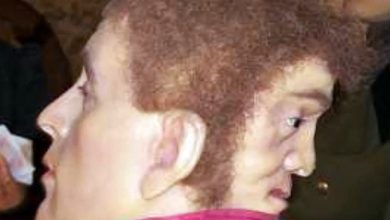How do you overcome Cyberphobia?

Cyberphobia is an unreasonable, uncontrolled, excessive, obsessive dread of computers. A strong and continuous dread of being near and using computers has become a genuine barrier to professional advancement, communication, and even relationships in the contemporary world.
A person with cyberphobia is often afraid of using a computer. Even mastering the fundamentals of computer literacy is tough for him. The words used to describe computers and computer networks frighten him.
Given that everyone, without exception, has to use computers at some time and frequently on a regular basis, cyberphobia substantially reduces a person’s quality of life. Because virtually every office or retail profession involves the use of technological equipment, this fear creates significant difficulties in a person’s employment.
People with cyberphobia favor “traditional” jobs, such as woodworking, which requires them to create things with their own hands. He refuses to recognize how much simpler life has become as a result of contemporary technologies. He ignores creative ideas and often overlooks accomplishments that improve job efficiency. The computer and the Internet are a source of lasting fear and spiritual wonder for a genuine cyberphobe.
The Computermarket, hypermarket has a lot of goods, but due to the handy filter, you won’t get lost. Sort items by price, characteristics, and availability after selecting a category or manufacturer. A trip to an online accessories shop has never been so easy!
Luddites are those who are frightened of computers. These people are scared of modern technology and prefer a low-tech lifestyle. They may also be afraid of cell phones and other contemporary devices like iPods and MP3 players.
Let’s look at the signs, causes, and therapy options for your computer phobia.
Causes of Cyberphobia
Anxiety disorders may develop and become burdensome for a variety of causes. Predisposing and provoking factors are of endogenous (internal) or exogenous origin and include:
- Disturbance in the biochemical processes of the body;
- Genetic predisposition (unfavorable heredity);
- A family history of anxiety disorders;
- Peculiarities of growing up (defects in upbringing, negative social environment);
- Personal traumatic experience;
- The action of chronic stressors or one-time severe stress;
- Non-functional personal beliefs inculcated stereotyping
After losing a career owing to industrial automation, a person may develop a fear of computers. A hacker gaining access to a computer and causing problems may trigger this contemporary fear.
Peers at school may make fun of a kid for not understanding how to use a computer. Alternatively, the pupil may be sensitive to a severe teacher’s unjust criticism. Cyberphobia may develop in a weak and impressionable kid as a result of humiliation or punishment.
When it comes to utilizing a computer, older individuals often have panic anxiety owing to emotions of self-doubt or poor self-esteem. Cyberphobia may develop as a result of a lack of computer skills.
Working on the computer and scouring the Internet for information may be tiring for seniors. They often express nostalgia for the “good old days,” when computers were not widely used in the office, and social networking and instant messaging were not widely used.
Computer systems with complex language, multi-function buttons, and keys are bewildering and frightening to the average individual.
Cyberphobia may emerge as a result of a person’s reluctance to learn new abilities or to cease behaving in an ‘old-fashioned’ manner.
Phobias, according to some physicians, may be caused by a biochemical imbalance in the body. Irrational anxiety and unfounded worries are often caused by disruptions in the synthesis and metabolism of neurotransmitters, which are physiologically active chemicals.
The environment in which a kid grows up and is reared also has a big impact on how they respond and how much anxiety they have. A neglected child who has been abused or does not get unconditional parental affection may develop profound emotions of insecurity or guilt.
The development of fear in adulthood is caused by a variety of reasons. To begin with, a personal porter has the following characteristics: a damaging self-perception system, poor self-esteem, denial of one’s own potential, and a lack of self-confidence.
A propensity to concentrate on errors and blunders is a frequent cause of cyberphobia. The inability to express unpleasant emotions such as resentment or rage constructively due to the suppression and repression of one’s own experiences leads to the subconscious development of a program that manifests as pathological responses such as unjustified worry and illogical dread.
Symptoms of Cyberphobia
A complex of symptoms manifests cyberphobia felt at the physiological, psychoemotional, and behavioral levels. At the same time, signs of disorder arise not only with direct contact with objects of fear – computer technology but also with the anticipation of using technology.
Physical symptoms:
- Internal trembling;
- Tremor of the limbs;
- Profuse sweating;
- Confused shallow breathing;
- Rapid arrhythmic heartbeat;
- Feeling of muscle weakness;
- Dizziness;
- Lack of air, suffocation;
- Hot flashes or chills;
- Nausea, vomiting;
- Numbness or tingling in the distal parts of the body;
- Pressing headache;
- Sensation of a foreign object in the larynx;
- The need for frequent urination.
Psychoemotional and behavioral symptoms are represented by:
- A feeling of detachment from reality;
- The presence of irrational thoughts about the dangers of using computers;
- Feeling of impending death;
- Fear of losing control over yourself;
- Fear of going crazy;
- The need to take protective actions against contact with computers;
- Search for options for performing tasks, which does not imply the use of technical means;
- A conscious choice of professions that do not involve working with computers.
With cyberphobia, a person can experience a full-scale panic attack at the sight of technology. Such objects strike terror into the patient’s mind. It should be pointed out that a person suffering from cyberphobia realizes the groundlessness and abnormality of fear. The person often makes an effort to eliminate the fear, but the disorder is stronger.
Not many people around them understand what they are going through, how a cyberphobe suffers. They rarely sympathize with the patient, they can even publicly ridicule his fears. This confuses the person, even more, forcing him to avoid computers with all his might.
Treatment of cyberphobia
If you or a loved one has cyberphobia, it is critical that you get treatment from a mental health professional as soon as possible. The doctor will evaluate the disorder’s severity, examine the patient’s medical history, and suggest the best treatment choices and self-help techniques. Anyone may overcome their fear of computers by taking a few simple steps.
Step 1: Gather the most accurate information possible
Read as much as you can about what causes it, how it presents itself, and how to overcome computer phobia. The more scientific knowledge you get, the better you will be able to pinpoint the source of your worry. You will learn how to manage anxiety and panic attacks from specialist books.
Medical portals will provide information that will assist in identifying limiting thinking and belief habits. When you learn more about cyberphobia, you’ll see that your emotions and experiences are quite typical. You are not alone; there are many other individuals who have similar concerns, and the majority of them have been able to escape hell and overcome their fear of computers.
Step 2: Develop your meditation and relaxation skills
During a panic attack, relaxation methods may help. Learning to breathe deeply, hold your breath, and exhale more slowly than inhaling is essential. When a person concentrates on the breathing process, he is able to break free from the grip of compulsive worries.
Smooth, leisurely breathing lowers anxiety and normalizes the autonomic nervous system, reducing or eliminating unpleasant physiological symptoms in the process. Doctors also suggest meditating twice a day or utilizing affirmations, which are brief words written in a positive manner.
Step 3: Begin a drug treatment program
If intense fear or anxiety attacks interfere with daily life, you should seek the help of a psychotherapist. Your doctor may recommend certain medications. As a rule, tranquilizers of the benzodiazepine group are used to relieve anxiety. Benzodiazepines instantly eliminate the psychoemotional and physiological components of an anxiety attack. However, such medications should be taken no more than 10 days since they have the ability to provoke drug dependence.
Step 4: Attend sessions of cognitive-behavioral treatment
The gold standard in treating anxiety disorders, including phobias, is this psychotherapy approach—cognitive Behavioral Therapy (CBT) aids in identifying anxiety-provoking ideas, relationships, and patterns. The psychotherapist will provide practical advice on how to manage and repair these non-functional thought patterns.
Step 5: Use desensitization to your advantage
Anxiety problems are often treated using a technique called desensitizing therapy. The technique entails gradual, safe interaction with the objects of fear. The patient gains self-confidence and a feeling of control over the issue through acquiring personal experience.
Step 6: Enlist the help of hypnotherapy resources
Clinical hypnosis is an effective and safe treatment option for phobias. The key to hypnotherapy’s effectiveness is identifying and then eliminating the sources of the fear throughout the sessions. This is made feasible by the induction into a hypnotic trance, which causes a brief constriction of awareness. In trance, the client’s critical mind is switched off, and he or she concentrates on the inner world’s activities and responds to the hypnotherapist’s recommendations.
Conclusion
Cyberphobia is a phobic anxiety spectrum condition marked by an irrational and excessive dread of computers. This fear impairs a person’s quality of life by preventing them from fully using contemporary technological tools. Medication, psychotherapy, and hypnosis are used to treat the condition.




